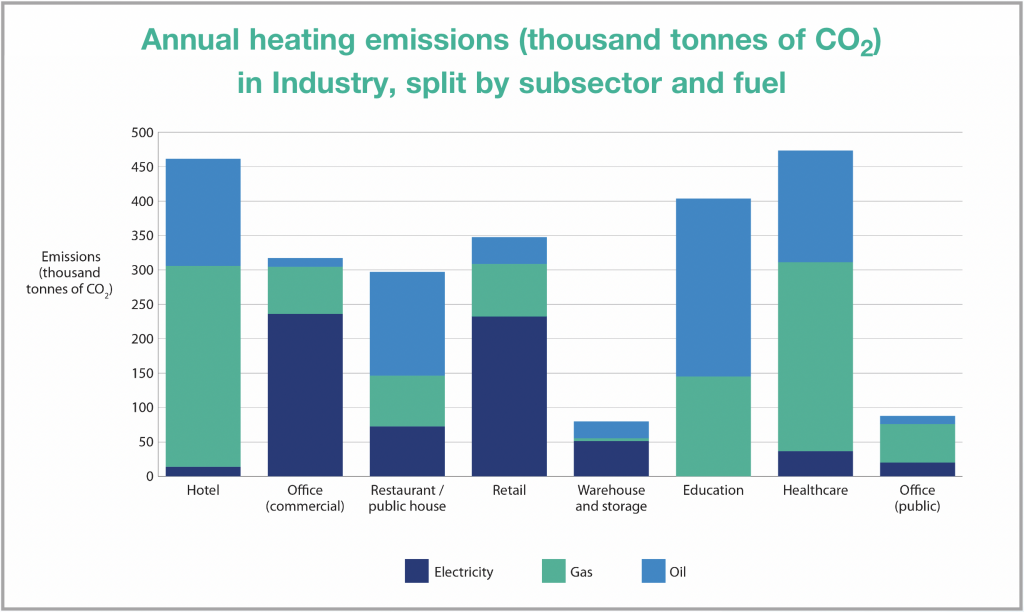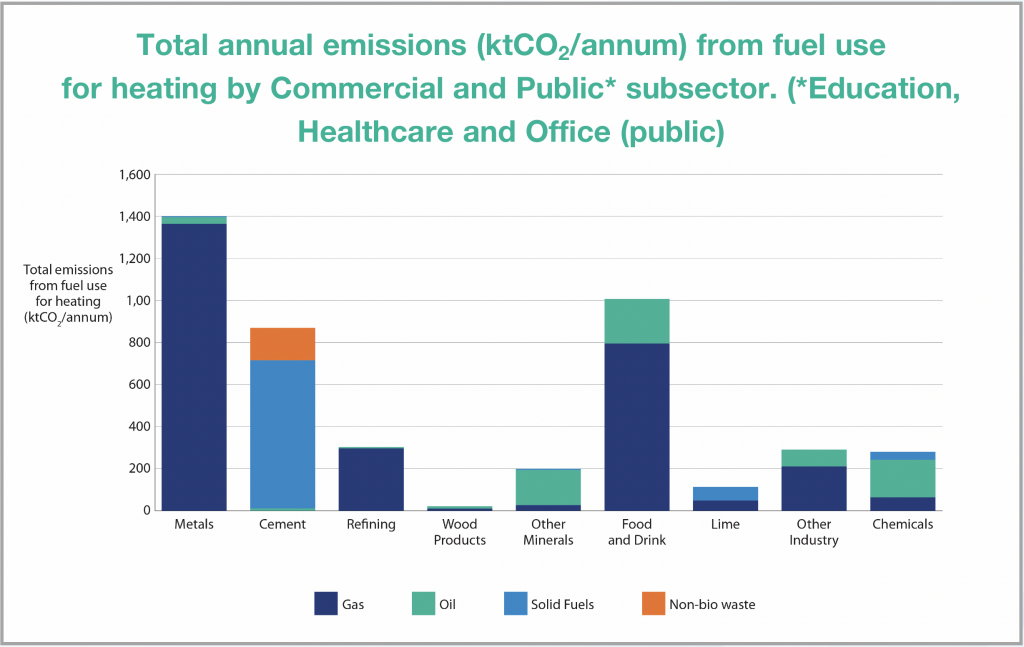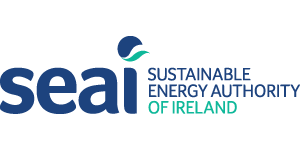Living within carbon budgets
5 October 2021Developing Ireland’s hydrogen potential
5 October 2021The path to net-zero heating and cooling in Ireland
The Sustainable Energy Authority of Ireland’s (SEAI) Head of Data and Insights, Jim Scheer, discusses the role of the organisation’s comprehensive National Heat Study in addressing the national challenge of decarbonising energy for heating and cooling.
Decarbonising the energy used for heating and cooling is a very significant challenge facing Ireland in the coming decade. Heat energy currently accounts for 38 per cent of final energy consumption in Ireland with oil, gas and solid fuels still the primary sources. It causes over 14 MtCO2 emissions, or nearly a quarter of total national greenhouse gas emission annually. These must be at least halved by 2030, and eventually reach net zero.
Our high carbon, fossil fuel-based economy
Almost 450,000 householders have upgraded their homes and thousands of businesses have made inroads on strategic energy management and technology change to renewables. Yet still net emission have risen by over one million tonnes (2 per cent per annum) over the last five years. We are still overly reliant on fossil fuels for heating, with less than 7 per cent of heat energy coming from renewable sources.
From a policy perspective, we have entered the age of the accountant. Carbon budgets, or annual maxima of greenhouse gas emissions will soon be set here in Ireland, matching policy ambition to the science. The challenge is to reverse the annual growth in heat emissions to a net 7 per cent reduction or better, together with actions in other sectors.
A net-zero pathway for heat
The upcoming SEAI National Heat Study will be the most comprehensive assessment of heating and cooling use in Ireland ever undertaken. It will provide detailed understanding of the sectors in which we use heat, the fuels we use to supply that heat and the solutions available to us to decarbonise our heat use. The study will include analysis of the costs of these solutions, provide insights as to how we can deliver them and how the transition may impact the people and businesses that use heat, namely, all of us. It will illustrate anticipated progress to 2030 and highlight areas where more work is needed to reach the relevant targets.
Early insights are highlighting particularly challenging areas when it comes to decarbonising heating and cooling. The fact that heat use is deeply embedded in our daily lives, across all sectors, makes the challenge much more than simple technology transition.
Households and buildings
Fossil fuels used to heat our homes cause 6.8 million tonnes of CO2 emissions annually, almost half of our heating related emissions. Oil boilers are still the most common central heating type in Ireland, heating around 700,000 homes. These cause 3.5 million tonnes of CO2 emissions annually, which is over half of all CO2 emissions from home heating. This highlights the need for solutions in high-carbon one-off, rural dwellings.
Around 1.5 million tonnes CO2 emissions arise from using coal and peat for home heating — just under a quarter of the whole sector. This is around the same level of emissions for heating in the entire commercial sector, making it a critical issue to address — made difficult perhaps by our historic ties to these fuels. Decarbonisation of all homes will require the eventual elimination of all oil boilers for home heating, the end of burning solid fuels like coal and peat for home heating and alternatives for fossil gas heated homes. And the faster the better.
Whilst energy efficiency remains a top priority for the sector, revised estimates for district heating show greater potential. Latest estimates indicate that it is technically feasible for around half of heat demand in all buildings (residential, commercial and public) to be supplied by renewable and waste heat through district heating networks. Important considerations for early delivery of district heating include the development of a regulatory framework to support the emergence of this heat market.
The upcoming study also gives deeper consideration to heat pumps for homes that are unlikely to ever be connected to a district heating network, for example those still heated with oil. The study also looks at the longer-term potential for hydrogen and biogas. The solutions required provide examples of necessary infrastructure deployment to ultimately eliminate fossil fuel use. The associated activity will create significant jobs in the sector and highlights the need for skills development in energy efficiency construction, electrical and plumbing trades, and larger infrastructure establishment.
Industry
Industry has the second largest share of CO2 emissions from fuel used for heat, accounting for one third or 4.6 million tonnes CO2 per year. Emissions in the sector have been largely constant since 2009. 89 per cent of the energy used for heating in the sector is from fossil fuels. It will be important to electrify heating in many circumstances and to consider the potential for bioenergy, hydrogen, carbon capture use and storage (CCUS) and other options to eliminate carbon emissions.
Around 70 large industrial sites within the EU emission trading scheme (ETS) account for approximately 87 per cent of the energy related CO2 emissions from the sector. Thus, fewer end-users in this sector hold the keys to large savings. Based on wide ranging consultation undertaken by SEAI, significant opportunities exist in some sectors to electrify processes – switching direct fossil fuel use to higher renewable electricity. Fuel switching to biomethane is also being considered to decarbonise some sectors, however resource availability, impacts on agricultural emissions, and feedstock sustainability are potential limiting factors.
Commercial and public sectors
Commercial and public services are responsible for almost one fifth of heating related CO2 emissions, or 2.5 MtCO2, and three quarters of cooling related CO2 emissions, or 1.0 MtCO2 per year. The majority of emissions from direct fossil fuel use of oil and gas come from, hotels (25 per cent), healthcare (24 per cent), educational facilities (22 per cent), and restaurants / pubs (12 per cent). A further 0.67 MtCO2 results from electrically sourced heating and cooling across the commercial and public sectors.
The particular challenges for the public sector will include eliminating oil use in Ireland’s schools and reducing emissions in healthcare, given the challenges of retrofitting whilst ensuring continuity and growth of services. In the commercial sector the incentives to improve buildings must impact a sector with high rates of leased assets and highly diverse business and construction types. Achieving decarbonisation in the sector will require end-to-end support models, availability of funding and Board level commitment. If action is not generated from within the sector, regulatory approaches will need to be prioritised to cause the necessary actions.
Beyond technology change
With 85 per cent of energy for heat coming from fossil fuels, the need for massive technology change is clear. That alone will not be enough though. The path to net zero will have to be supported by parallel efforts to decarbonise the electricity grid, electrify heating demands, establish regulatory and market supports for district heating networks, for example. We will need to consider areas where we can sustain immediate emission reductions, like we did in transport over the Covid lockdown period. And we will need to look for alternatives to ‘high-carbon’ economy, where solutions to decarbonise in line with the net 7 per cent reduction pathway can’t be found in specific sectors. All must play their part.
A broader policy package is under development. Essential government supports in the form of grants, tax incentives and supports for financing are in the process of being re-designed to support more householders to get off fossil fuels, and a national campaign promoting the new supports for households to upgrade will get underway in early Autumn. New supports for business are being implemented (see www.seai.ie for the latest), among many other supporting actions, as further detailed in the Climate Action Plan. It is hoped that this multi-pronged approach, with government, businesses, individual householders, and communities working together will drive the societal change necessary.
SEAI will be publishing a series of technical reports and a final concluding report that brings it all together, with all reports expected to be released before the end of the year. Stay tuned to www.seai.ie for details.



